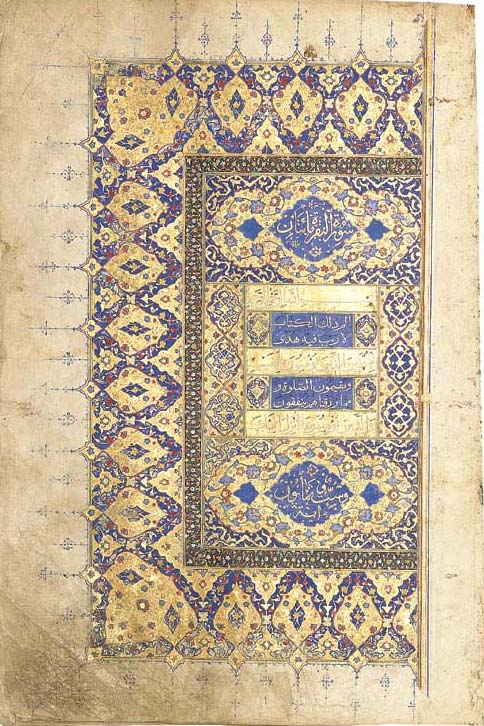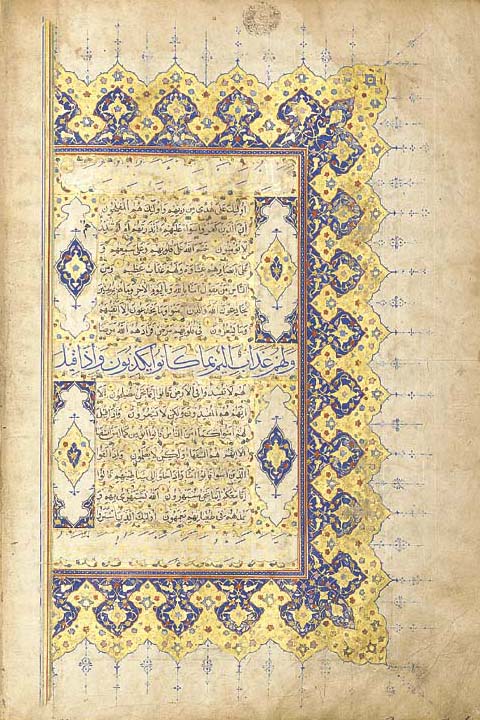 |
 |
 |
 |
Quran, mid-16th c., by Mirza Muhammad
Source: http://www.christies.com/LotFinder/search/LotDetail.asp?sid=&intObjectID=4160741&SE=CMWCAT04+117507+318667546+&QR=M+1+104+Aqc0000900+107390++Aqc0000900+&entry=india&SU=1&RQ=True&AN=105
(downloaded Sept. 2003)
"QUR'AN. Mughal India or Deccan, possibly Ottoman Anatolia, circa mid-16th century. Manuscript on paper, 251ff. with 17ll. of black naskh, the first, ninth and last line alternately in gold and blue, gold roundels between verses, text within panels outlined with colours and gold, panels of floral illumination highlighting text, illuminated marginal medallions marking every fifth and tenth verse, two opening illuminated bifolos, sura headings in white or gold on illuminated panels, f.2b inscribed in black khatt Mirza Muhammad, waqf inscription on f.1a and seal impression of Ghadanfar dated 992, two further seal impressions on f.2b and final folio, slight staining, original gold tooled binding with flap with cloud bands and floral decoration, decoupé doublures. Folio 14 1/8 x 9¾in. (35.7 x 24.5cm.)
Lot Notes: Superficially, this Qur'an has the appearance of a standard type of Qur'an generally thought to have been produced in Shiraz in the mid 16th century. However, the use of floral meander in the margins of the text has a strongly Indian feel, while the marginal medallions are of a type that would not be assocated with Iran at all.
The presence of a lengthy waqf inscription concerning an individual called Ghadanfar in a village in Anatolia on the opening folio and his seal impression dated 992 (1584 AD) gives a terminus ante quem for the production of this Qur'an. It suggests further that it may actually have been produced within the Ottoman Empire.
Folio 2b has a tiny inscription within the text which states that the
hand is that of Mirza Muhammad. Qur'ans of this type are rarely signed
or dated."